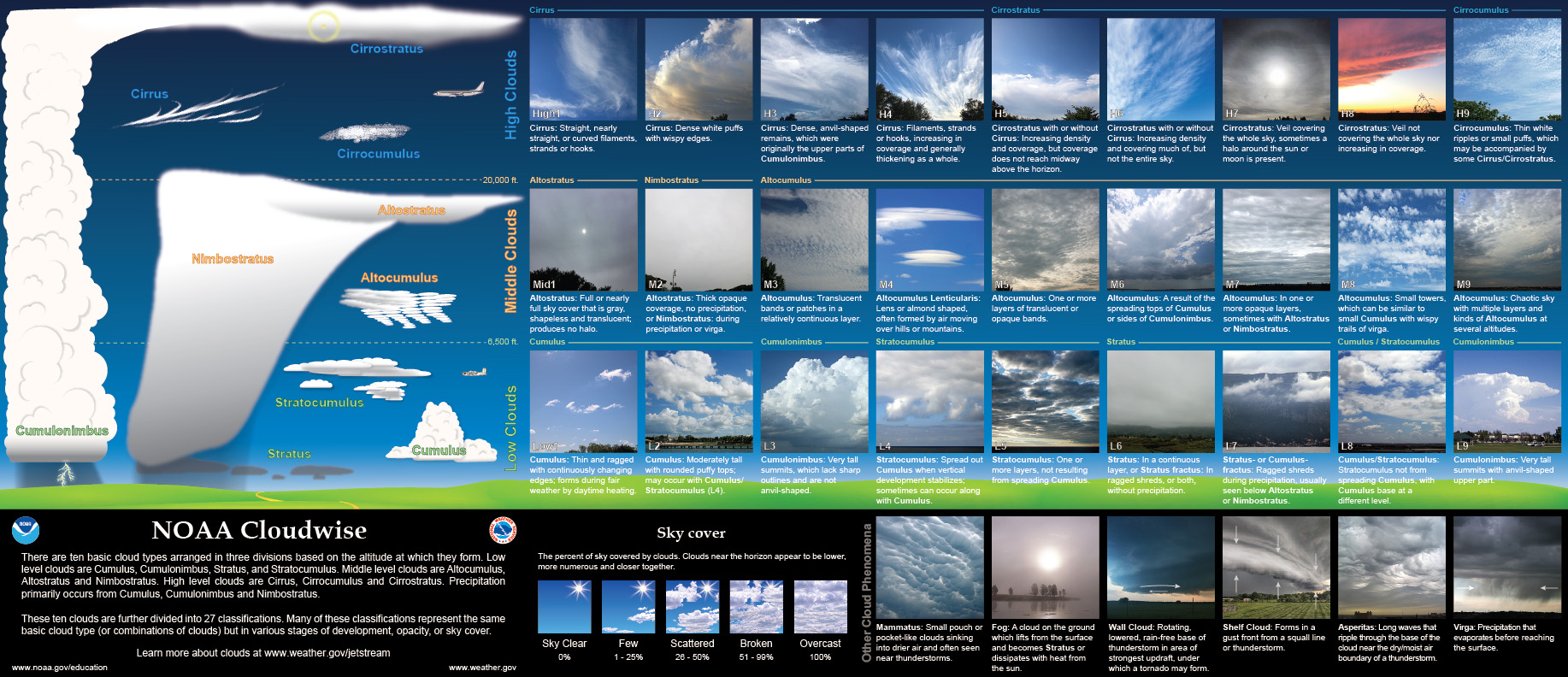Prior to the availability of high-resolution satellite images, a weather observer would identify the types of clouds present and estimate their height as part of the weather observation.
From those sky condition observations, symbols representing cloud types were plotted on weather maps which the forecaster would analyze to determine the location of various weather systems.
Knowing the type of clouds provided vital information about the atmosphere at each location – the clouds told a weather story to the meteorologist.

In the 1930s, the National Weather Service standardized codes for cloud forms and cloud cover according to the international system of classification. From there, charts were created describing this state of the sky.
The NWS Cloud Chart is a picture of the state of the sky, displaying both individual clouds and combinations of clouds. This helps provide a picture of the state of the atmosphere at the time of observation.
For example, an overcast layer of stratus (St) clouds mean the atmosphere is stable, implying little change in the current conditions for the next few hours. Cirrostratus (Cs) clouds increasing in sky coverage and thickness implies a change from fair weather to possibly rainy or snowy conditions.
Some cloud classifications on the Cloud Chart represent the same cloud type in different stages of development or amounts of sky cover. For example, cumulus (Cu) clouds of little vertical extent are classified as a 'Low 1' but are classified as 'Low 2' if there is moderate vertical growth. A cumulonimbus (Cb) without a visible anvil is classified 'Low 3' but with an anvil, it is classified as 'Low 9'.
One thing to remember, clouds are identified based upon the elevation of the observation point. From sea-level, altocumulus clouds might be observed over the top of a mountain. However, from that mountain top, an observation of the same cloud would likely report as stratocumulus. Therefore, two observers looking at the same cloud can often report different cloud classifications.
The exception to this is cumulus or cumulonimbus clouds over a mountain. Even though these low-level clouds typically have bases under 6,500 feet (2,000 meters) above ground level, when observed over a mountain top, their base might be 12,000 feet (3,600 meters) or higher relative to the ground level. However, the base of those clouds would be well within 6,500 feet (2,000 meters) above their location over the mountain. Therefore they would still be called cumulus or cumulonimbus clouds even when seen from the ground.
The Cloud Chart (below) shows examples of each of these 27 categories.

PDF versions of the poster. Full-size
In the United States today, the 27 cloud symbols are no longer plotted on surface maps. Weather observations became computerized in the 1990s, and these automated observing systems can only detect cloud height, not cloud type. However, weather observations by humans continue in most of the world and include the 'state of the sky' using these symbols.


